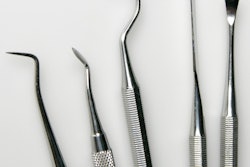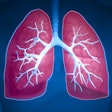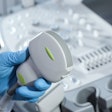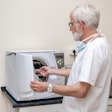
The importance of maintaining adequate safeguards for infection control was the topic of a session at ADA 2013 in New Orleans. Recent infection-control breaches have resulted in the deaths of some patients, and left others infected with hepatitis and HIV, noted an infection-control compliance expert.
The good news is that there have been no confirmed cases of occupationally acquired HIV, in which infected patients have transmitted the virus to dental professionals, said Leslie Canham, CDA, RDA, a certified trainer with the U.S. Occupational Safety and Health Administration (OSHA).
But six patients who were treated by a Florida dentist with AIDS in the early 1990s contracted the disease, and two later died from complications. And several patients have been infected with hepatitis and HIV during dental procedures during the last few years due to infection-control breaches.
The Oklahoma case
One of the worst cases of infection-control lapses came to light in March, when Oklahoma health officials began notifying 7,000 patients that they may have been exposed to blood-borne viruses during invasive procedures performed by Tulsa oral surgeon W. Scott Harrington, DMD.
“Patients have to trust that we have adequate infection-control procedures so they can feel safe.”
Investigators said they found numerous violations of health and safety laws, including the use of rusty instruments on patients known to have infectious diseases and the repeated use of contaminated vials of propofol. As of October, 90 of Dr. Harrington's patients have tested positive for hepatitis C, six former patients have tested positive for hepatitis B, and four have tested positive for HIV. In September, health officials confirmed one of the cases as a patient-to-patient transmission of hepatitis C resulting from the practice, the first documented report of such a transmission associated with a dental setting in the U.S.
In a 2011 case, the U.S. Department of Veterans Affairs (VA) notified 535 veterans that they may have been exposed to hepatitis B, hepatitis C, and HIV by Dwight Pemberton, DDS. Dr. Pemberton had performed invasive dental procedures on patients in the VA dental clinic in Dayton, OH, but failed to change latex gloves and properly sterilize dental instruments between patients. Two patients have tested positive for hepatitis B, and one patient tested positive for hepatitis C.
The U.S. Centers for Disease Control and Prevention recommends that medical offices perform weekly spore testing of sterilized instruments. The Tulsa oral surgeon's office hadn't done this in six years.
At other times, contaminated water in dental office water lines has been the culprit. An elderly Italian woman died in 2012 of Legionnaires' disease, with the Legionella bacteria traced back to her dentist's office. And California reported the deaths of two dentists, one in the early 1990s from Legionnaires' that came from contaminated water lines in their offices.
Dental practitioners might be tempted to protect themselves by not seeing patients with HIV or AIDS, but such a practice is illegal under the Americans with Disabilities Act, Canham noted. In any event, practitioners can protect themselves adequately by adopting protection such as gloves and eye protectors, she said.
There is some risk of contracting infectious diseases through accidental needle sticks, as indicated by the statistics below on the number of infections that come from sharps injuries:
- Hepatitis B: 6% to 30%
- Hepatitis C: 1% to 2%
- HIV: 0.03%
Dentists give more injections than any other type of physician, according to Stanley Malamed, DDS, a professor of anesthesia at the University of Southern California Ostrow School of Dentistry, during an earlier ADA session.
Also, dental professionals can catch oral herpes from patients if they don't wear protective eyewear and saliva is splashed into their eyes during procedures, Canham said.
Patients are watching
Canham noted that patients now take notice if proper infection-control protocols are followed during medical and dental visits.
"Be very aware your patients are watching you," Canham cautioned. "They are watching what we touch with gloved hands and will post their observations on the Internet," she said.
Some patients have posted that dental hygienists or assistants looked at their cellphones or went into their purses with gloved hands, both of which would cause contamination, Canham said.
Cross contamination can be a problem for immune-compromised patients, she said.
"Patients have to trust that we have adequate infection-control procedures so they can feel safe," Canham said.
Dental staffers should periodically check to ensure that instruments are cleaned properly before they are sterilized, Canham noted. They should make sure there's no visible blood, dental cement, or other debris stuck to them, because this can harbor microorganisms that can transmit bacteria, she said.
To control bacteria and other pathogens, dental offices should use U.S. Environmental Protection Agency-registered, hospital-grade disinfectants that have minimum kill claims for hepatitis and HIV, Canham said.
Dental professionals should also stay abreast of emerging infectious diseases, she said, noting that infection-control failures have resulted in the closure of offices by health officials.



















